$\begingroup$ An odds ratio is the ratio of two odds Each individual odds value in the ratio can be converted to a probability as you propose, but I don't think that the same transformation applied to an odds ratio results in a probability value that has any easy interpretation $\endgroup$ – EdM Jan 29 ' at 1734Odds correlate to the probability of a team winning, which is the implied probability A 140 favorite has about a 54% chance of winning, while a 1 underdog has a 4545% chance Did you notice those percentages add up to more than 100%?How to find probability and odds and the difference between the two We also discuss experimental probablility, theoretical probability, odds in favor, and
Relative Risk Ratios And Odds Ratios
Odds vs probability vs chance
Odds vs probability vs chance-Calculating Probability Given Odds To calculatePlaying 2 vs 1 dice I get around a % win rate Now to my problem, if I want to calculate the amount needed to always win as the house, the odds of losing (for the player) needs to be higher than the potentialwinningriskamount



2 Odds Ghci Grade 12 Mathematics Of Data Management
The odds are defined as the probability that the event will occur divided by the probability that the event will not occur A probability of 0 is the same as odds of 0 Probabilities between 0 and 05 equal odds less than 10 A probability of 05 is the same as odds of 10 Think of it this way The probability of flipping a coin to heads is 50% Converting Odds to Probability Simply add the 2 components of the odds together to make a new denominator, and use the old numerator eg If the odds are 35, or 3 to 5, the probability is 3 ÷ (35) = 3/8 = 375% Converting Probability to Odds Take the probability, and divide it by its compliment = (1itself) eg Odds can be expressed as a ratio of the probability an event will happen divided by the probability an event won't happen Odds in favor of A = A / (1 A), usually simplified to lowest terms, For instance, if the probability of an event occurring is 075, then the odds for it happening are 075/025 = 3/1 = 3 to 1 for, while the probability that it doesn't occur is 1 to 3 against
Odds is a see also of probability As nouns the difference between odds and probability is that odds is the ratio of the probabilities of an event happening to that of it not happening while probability is the state of being probable; Probability = 1/5 = 02;Odds vs Probability Odds and probability are both terms used to describe the likeliness for something to happen Many of us mix them up, but in fact, they are quite different, which is why we have added this article to our online guide section Without any numbers, the words can mean the same
The probability of having the winning plate is 1 out of 25 Odds of winning = number of chances to win number of chances to draw other numbers Odds of winning = 124 (Read as "1 to 24") Odds of not winning = number of chances to draw other numbers number of chances to win Odds of not winning = 241 (Read as "24 to 1") As you can see, the idea of probability is relatively simple But the idea of odds, on the other hand, is a bit more complicatedmostly because there's more than one way to write them The most common way is what's called "bookmakers odds" Probability is 1/4 while odds in favor are 1/3 You can see how mistakenly interchanging the terms could give the wrong information The 'odds in favor' of RED would be mathematically calculated by $latex Odds\_Favor (RED) = \frac {3 \ RED \ marbles} {9 \ NOT \ RED \ marbles} = 13&s=2$




Implied Probability Betting Math Made Simple 21 Update




Webinar Recording Signup
To convert odds to probability, take the player's chance of winning, use it as the numerator and divide by the total number of chances, both winning and losing For example, if the odds are 4 to 1, the probability equals 1 / (1 4) = 1/5 or % Odds of 1 to 1 (50%) are called "evens," and a payout of 1 to 1 is called "even money"Of probability, chances and odds are not the same For instance, the odds in favor of A are P(A) / P(Ac) = (3/4)/(1/4) = 3/1 It is said that the odds in favor of A are 31 or that A is an event twice as likely as "not A" Therefore, the odds of A occurring are expressed in the scale of the probability of "A not occurring" The odds for a possible event E are directly related to the (known or estimated) statistical probability of that event E To express odds as a probability, or the other way around, requires a calculation The natural way to interpret odds for (without calculating anything) is as the ratio of events to nonevents in the long run



Odds Likelihood Ratios Guide To Diagnostic Tests



2 Odds Ghci Grade 12 Mathematics Of Data Management
The differences between odds and probability are discussed in the points given below The term 'odds' is used to describe that if there are any chances of the occurrence of an event or not As against, While odds are expressed in the ratio, the probability is either written in percentage form or Odds vs Probability Probability is a mathematical assumption of chance that can be calculated using an equation The equation measures the chances for an event to occur against the total number of chances that occurrence may produce The odds are 1626 and probability is 016% If you're playing poker long enough you will somewhat regularly encounter the aces vs kings scenario at a table A formula to estimate the probability for this to happen at a 9 player table is This formula slightly underestimates the actual probability which is a little bit higher
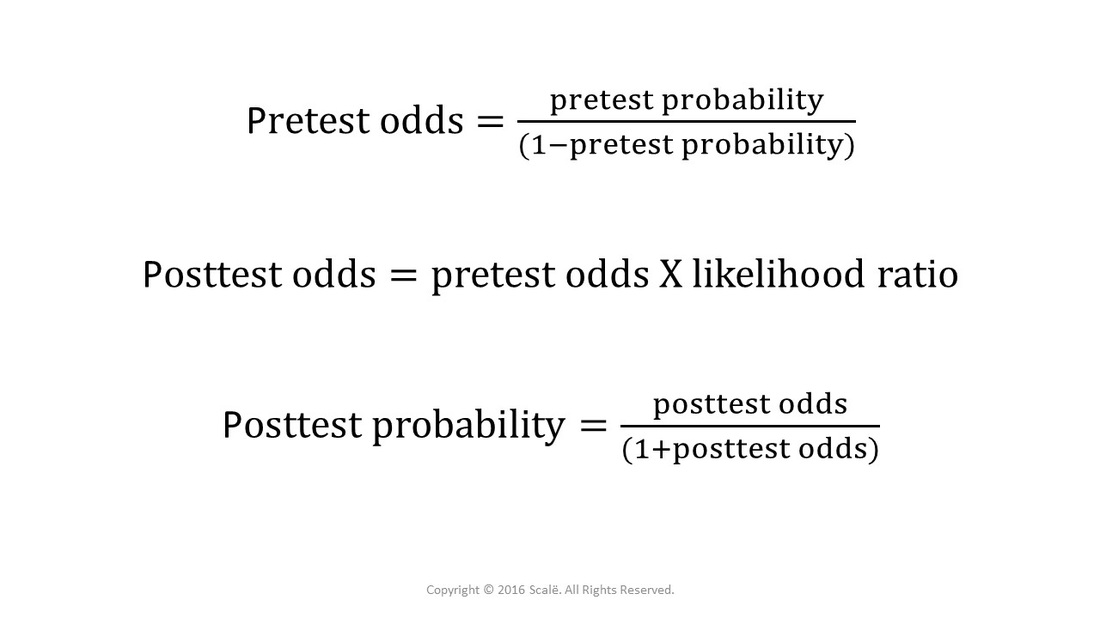



Bayes Theorem Is Used To Calculate The Probability Of An Outcome




Probability Vs Odds What S The Deal With State Lottery Odds Table
The probability of drawing a red card from a standard deck of cards is 26/52 (50 percent) The probability of drawing a club from that deck is 13/52 (25 percent) And so on The odds for an event is the ratio of the number of ways the event can occur to the number of ways itThe odds in favor of an event is the ratio of the number of ways the outcome can occur to the number of ways the outcome cannot occur # of ways the event CAN occur # of ways the event CANNOT occur This is actually a lot easier than probability So, let's take a look at an example Odds Odds seems less intuitive It is the ratio of the probability a thing will happen over the probability it won't In the spades example, the probability of drawing a spade is 025 The probability of not drawing a spade is 1 025 So the odds is 025/075 or 13 (or 033 or 1/3 pronounced 1 to 3 odds) Moving back and forth




How To Calculate Odds Ratios And Probabilities In Case Control Studies Cross Validated




Odds Ratio The Odds Ratio Is Used To Find The By Analyttica Datalab Medium
Equally, backing something at short odds with a potentially high probability does not guarantee it will become true As we have suggested, bookmakers use odds to display the probability or otherwise of all outcomes on sporting events They can do this in one of three ways fractional eg 2/1, decimal eg 300 or American eg 0Probability % By convention only a set of fractions are used in fractional odds betting markets The set does not include exact mathematical equivalents to all possible decimal and American odds We use the closet fraction that is used in betting markets Probability compares the number of successes to the total number of attempts made The odds in favor of an event compares the number of successes to the number of failures In what follows, we will see what this means in greater detail First, we consider a little notation




Learn Odds In Favour And Odds Against In 3 Minutes
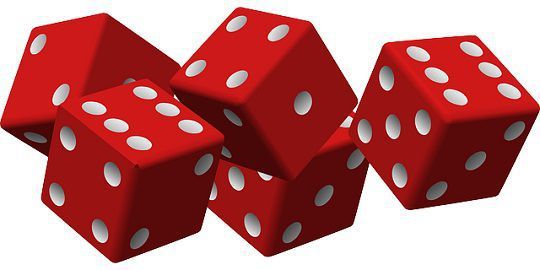



Difference Between Odds And Probability With Comparison Chart Key Differences
Understanding odds conversion to the percentage and implied probability behind the odds on offer is key to assessing the potential value in a particular betting market And it is just as important when assessing the value that exists with regards to specific odds on a particular outcomePositive odds (100 divided by (the percentage divided by 100)) minus 100 eg a probability of 10% = (100 / (10 / 100)) 100 = 900 Negative odds The probability divided by (1 minus (the probability divided by 100)) then multiply by 1 to convert into a negative eg a probability of 60% = (60 / (1 (60/100))) * 1 = 150A probability is always expressed as a number between 0 and 1 Odds on the other hand are expressed as the likelihood of an event occurring divided by the likelihood of it not occurring Probabilities of 0 are the same as odds of 0 If the probability is between 0 and 05, the odds
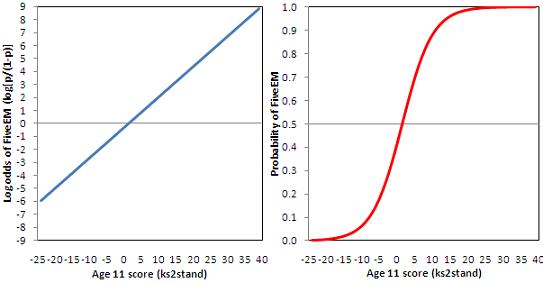



4 5 Interpreting Logistic Equations



Odds Vs Probability Vs Chance Data Science Central
Down Transition Probability The probability that an asset's value will decline in one period's time within the context of an option pricing modelMoney Line Implied Probability The following chart shows how likely a team is to win based off the odds This is helpful in handicapping because you can see just what percentage of your wagers you need to win at each given money line in order to profit The left chart is to be used for favorites, the right for underdogsHome > Online Casinos > Casino Articles > House Odds vs True Odds House Odds vs True Odds I've written about house odds vs true odds before, but not in so many words You can read about the basics of probability on this site, and you can read about the house edgeBut another way of looking at these concepts is by examining the difference between payoff odds and true odds



Odds Likelihood Ratios Guide To Diagnostic Tests
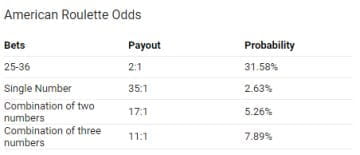



Odds Probability The Difference Explained With Examples
The higher the number, the greater the probability of the outcome Using an example of decimal odds, a candidate has 2 odds to win the next election If so, the implied probability is 4545% Odds and Probability In mathematical concepts, we use odds and probability calculations in many ways like while solving the Playing Cards Probability and calculating the problems like the trains may be late, it may take an hour, to reach home and so forth Here we will be discussing Odds & Probability Topic The definitions for both are given in this articleOdds vs Probability A good way to understand the difference between odds and probability is to imagine rolling a die and hoping to land on a two The odds of rolling the two are 1 to 5 One representing the chance of landing on the two, and five representing the alternative possibilities of landing on one of the other sides The probability



1




Probability Vs Odds What S The Difference Learn It And By Z Ai Towards Data Science
Posttest probability = Posttest odds / (Posttest odds 1) Fagan nomogram 3 The relation can also be estimated by a socalled Fagan nomogram (shown at right) by making a straight line from the point of the given pretest probability to the given likelihood ratio in their scales, which, in turn, estimates the posttest probability at the point The wikipedia page claims that likelihood and probability are distinct concepts In nontechnical parlance, "likelihood" is usually a synonym for "probability," but in statistical usage there is a clear distinction in perspective the number that is the probability of some observed outcomes given a set of parameter values is regarded as the likelihood of the set of parameterThat's because of the vig, which is a sportsbook's cut for facilitating your betTo calculate implied probability, use the following



Odds Ratio For A Simple Distribution Jmp User Community
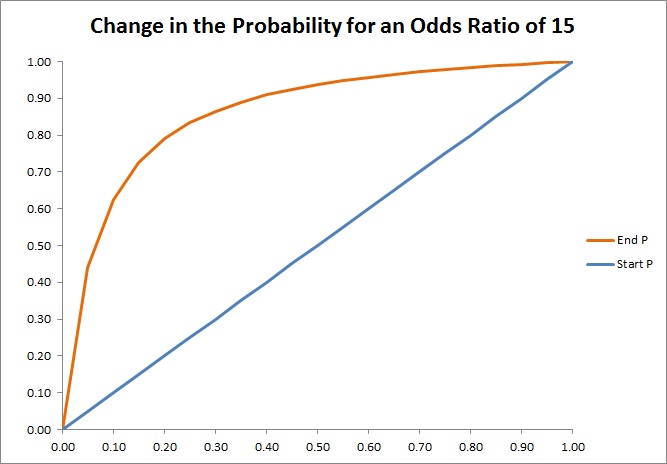



How To Convert Odds And Units To Probability Convert Odds To Percentage
Odds The relationship between x and probability is not very intuitive Let's modify the above equation to find an intuitive equation Step1 Calculate the probability of not having blood sugar Step2 Where p = probability of having diabetes 1p = probability of not having diabetes You can interpret odd like below Probability has a limited range from zero to one Odds has an infinite range The probability of something happening is always less than the odds of it happening (assuming the probability is nonzero) The smaller the probability, the more similar probability and oddsLog_odds = seq(from =5,to =5,by =025) odds = exp(log_odds) # use 'plogis' function to calculate exp(x)/(1 exp(x)) p = plogis(log_odds) # use odds/(1odds) to calculate p a different way p2 =odds/(1odds) # store probability of failure (1p) q =1p # store log_odds and y in data frame for use with ggplot 1
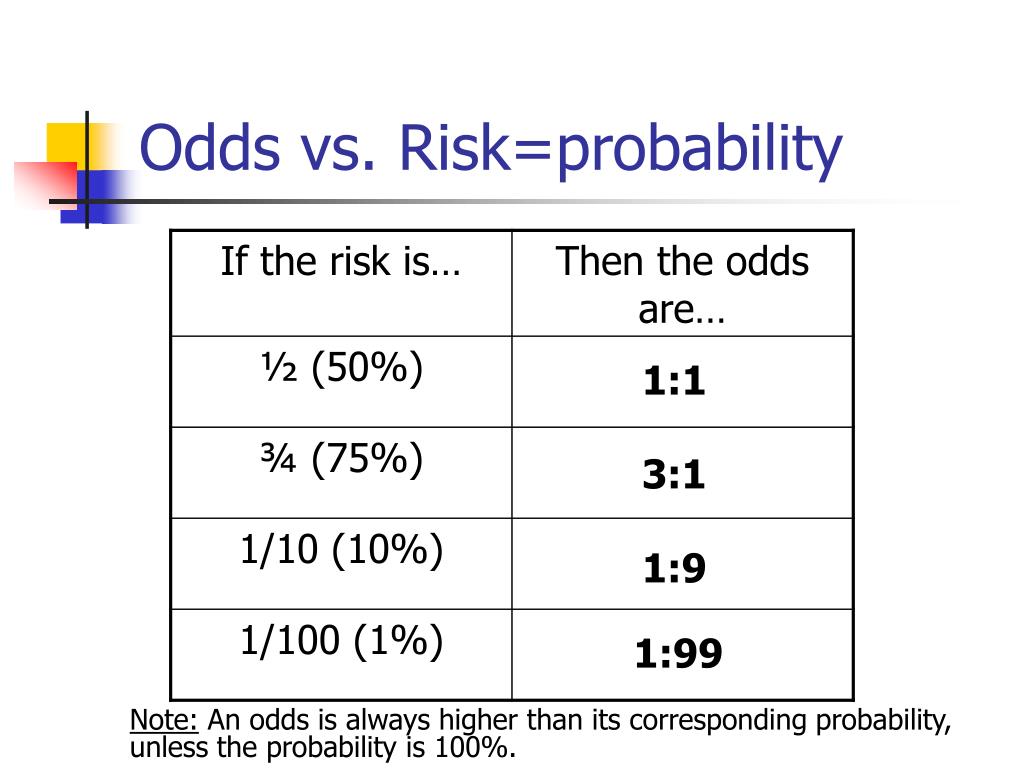



Ppt Conditional Probability Powerpoint Presentation Free Download Id




Odds Vs Probabilities Odds Ratio In Spss Exp B Is An Odds Rather Than A Probability Odds Success Failure Probability Likelihood Of Success For Ppt Download
Intuitively, it's difficult to estimate the most likely success, but with our dice probability calculator, it takes only a blink of an eye to evaluate all the probabilities The resulting values are P₁ = for 10 sided dice P₂ = Probability theory is an interesting area of statistics concerned with the odds or chances of an event happening in a trial, eg getting a six when a dice is thrown or drawing an ace of hearts from a pack of cards To work out odds, we also need to have an understanding of permutations and combinationsCalculating the odds without the number of subjects by the ratio of the number of events (1) by the number of nonevents (4) odds = 1/4 = 025;



Definition And Calculation Of Odds Ratio Relative Risk Stomp On Step1
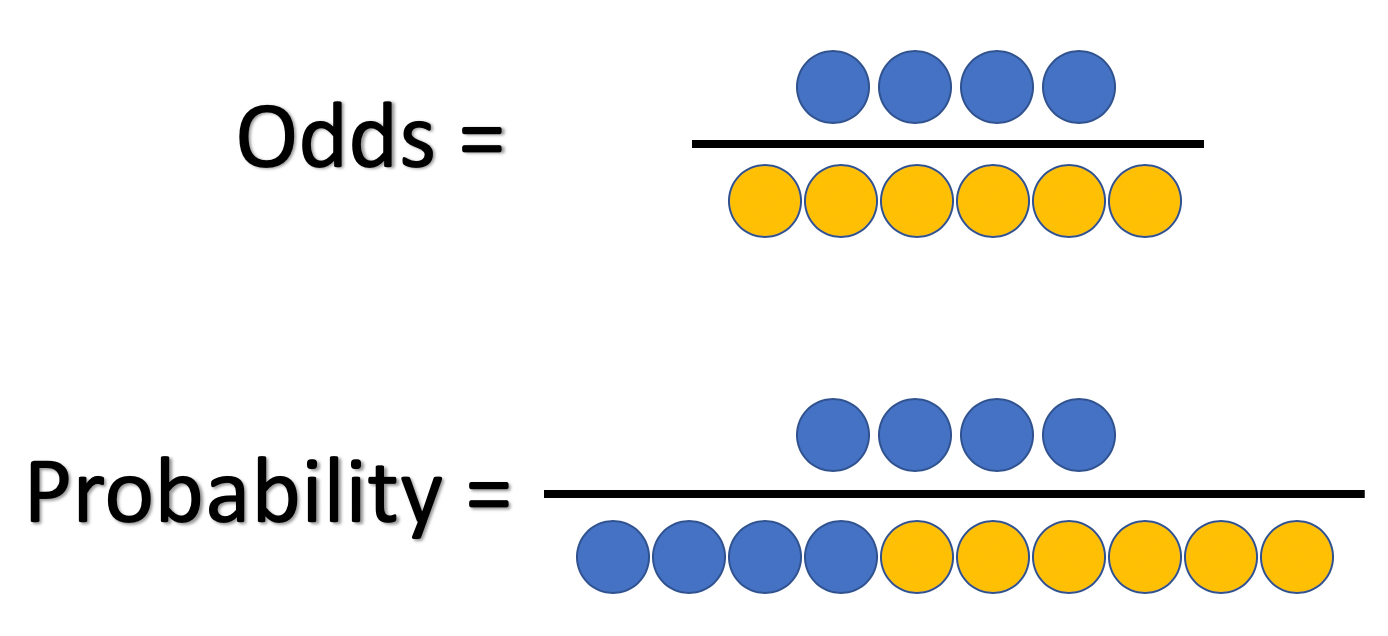



What And Why Of Log Odds What Are Log Odds And Why Are They By Piyush Agarwal Towards Data Science
Sandhagen vs Dillashaw Odds Online sportsbook Bovada has the Sandhagen vs Dillashaw odds and it is Cory who is the 0 favorite while TJ returns to action as a 160 underdog These betting lines mean you would have to bet $0 to profit $100 with a Sandhagen victory, while a $100 bet on Dillashaw could profit you $160Equal odds are 1 1 success for every 1 failure 11 Equal probabilities are 5 1 success for every 2 trials Odds can range from 0 to infinity Odds greater than 1 indicates success is more likely than failure Odds less than 1 indicates failure is more likely than success ProbabilityMany people wrongfully assume odds and probabilities are the same thingThey're definitely not, as there's a significant difference between saying there are
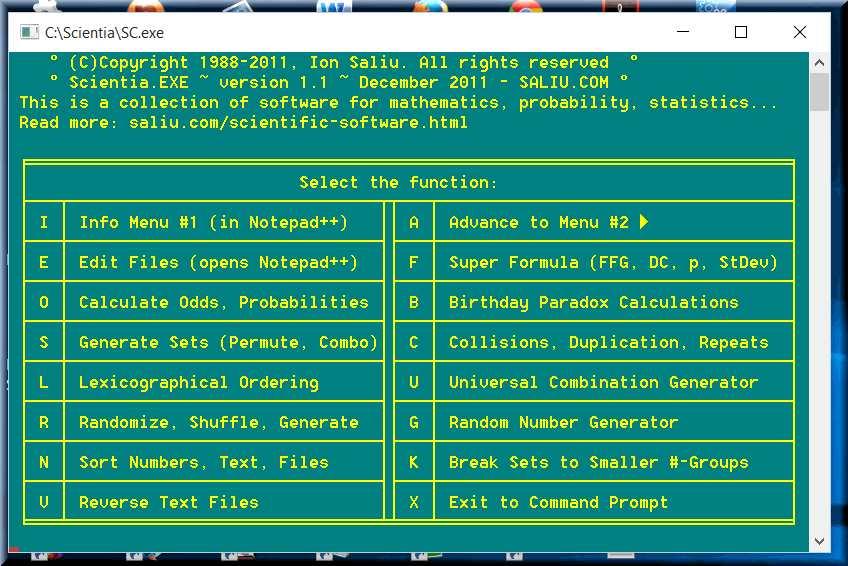



Blackjack Probability Odds 21 Double Down Pairs Hands
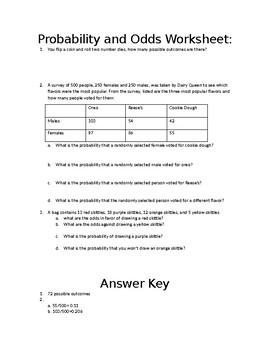



Probability And Odds Worksheets Teaching Resources Tpt
Odds, are given as (chances for success) (chances against success) or vice versa If odds are stated as an A to B chance of winning then the probability of winning is given as P W = A / (A B) while the probability of losing is given as P L = B / (A B) For example, you win a game if you pull an ace out of a full deck of 52 cardsOut of 5 times, 1 time will be the event and 4 times will be the nonevent, odds = 025 Odds = 1/5 / 4/5 = 1/4 = 025;The cumulative probability is determined by adding one hand's probability with the probabilities of all hands above it The Odds are defined as the ratio of the number of ways not to draw the hand, to the number of ways to draw it In statistics, this is called odds against For instance, with a royal flush, there are 4 ways to draw one, and
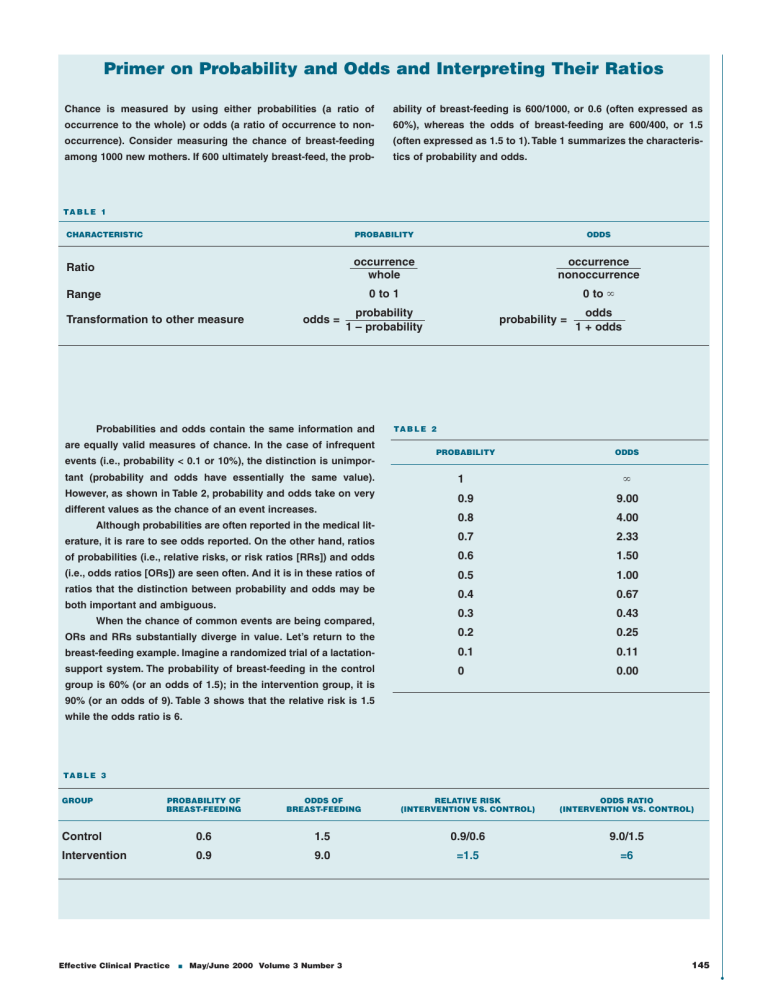



Primer On Probability And Odds And Interpreting Their Ratios



Ctspedia Ctspedia Oddsterm




The Difference Between Relative Risk And Odds Ratios The Analysis Factor



What Is The Probability Of Event E If The Odds In Favor Of E Is 10 21 Quora



Why Do High Odds Mean A Low Chance Quora




Probability Stats With Cats Blog




Learn Odds In Favour And Odds Against In 3 Minutes




Odds Ratios Versus Relative Risk
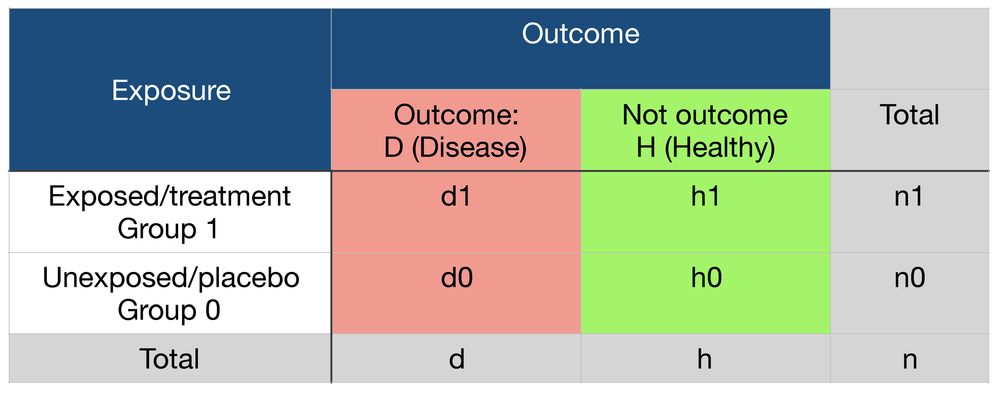



Probability Odds Ratio And Relative Risk Gp Raj




Relation Between Probability And Odds At Different Values Of Probability Download Scientific Diagram




Probability Vs Odds Youtube



Chapter 4 Introduction To Probability Statistics At Eastside Prep




What Is A Probability And What Are Odds Core Im Podcast



Relative Risk Ratios And Odds Ratios




Relation Between Probability And Odds At Different Values Of Probability Download Scientific Diagram




7 Facts About Probability And Odds That You Don T Know




Probability Vs Odds In Favour Or Against An Event Examples Youtube




Probability And Odds Youtube
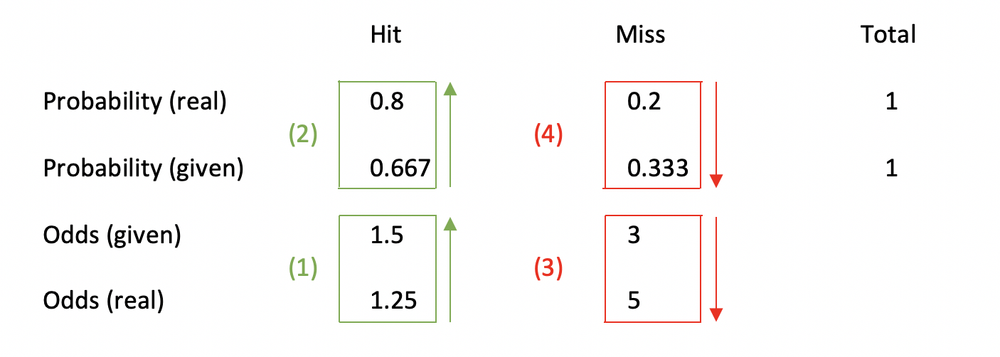



What Are Odds The Right Way To Look At Odds For Sports Betting



Are You Mixing Up Odds With Probability By Keith Mcnulty Towards Data Science
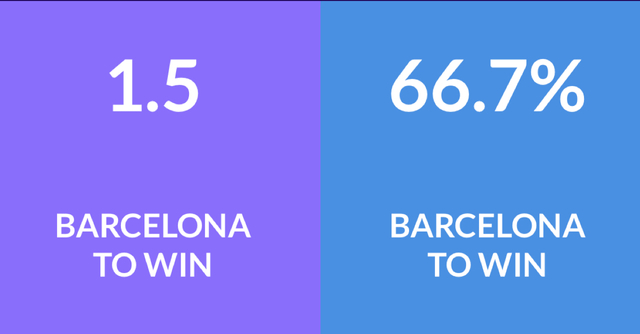



Sports Betting Odds Explained Decimal Odds Fractional Odds American Odds And Probability




Calculating Probability And Odds How To Find The Odds Of Casino Games
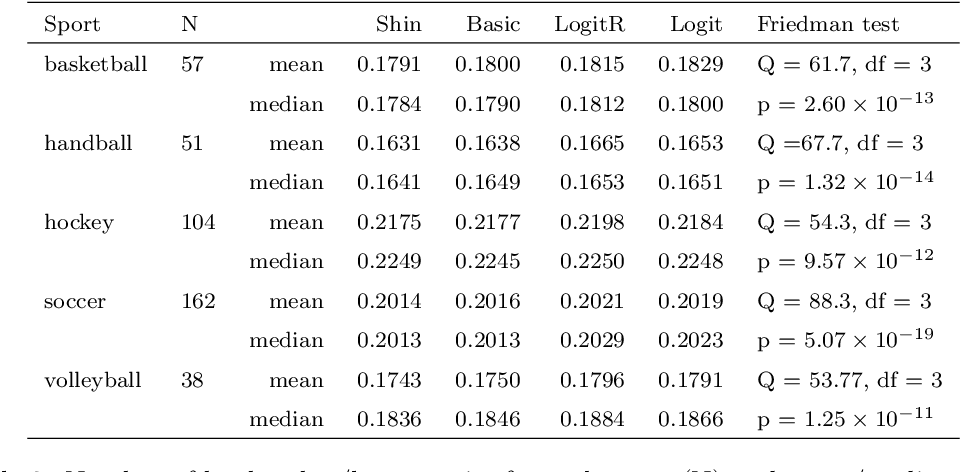



Pdf On Determining Probability Forecasts From Betting Odds Semantic Scholar



Probability Odds Lessons Blendspace
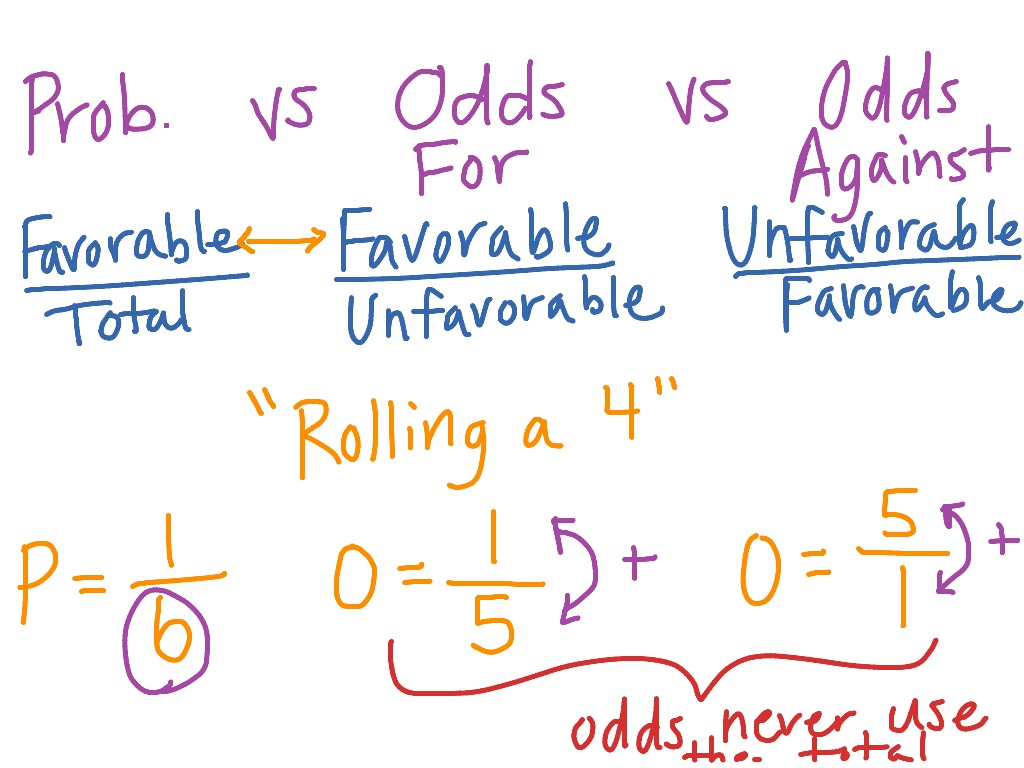



Odds Versus Probability Math Showme
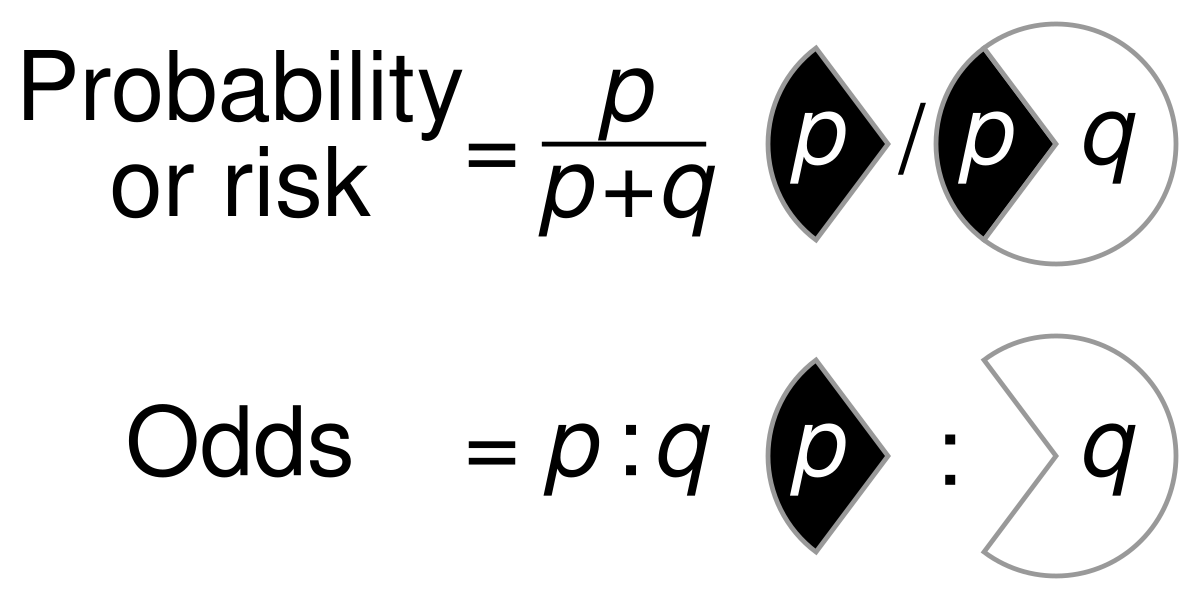



File Probability Vs Odds Svg Wikimedia Commons
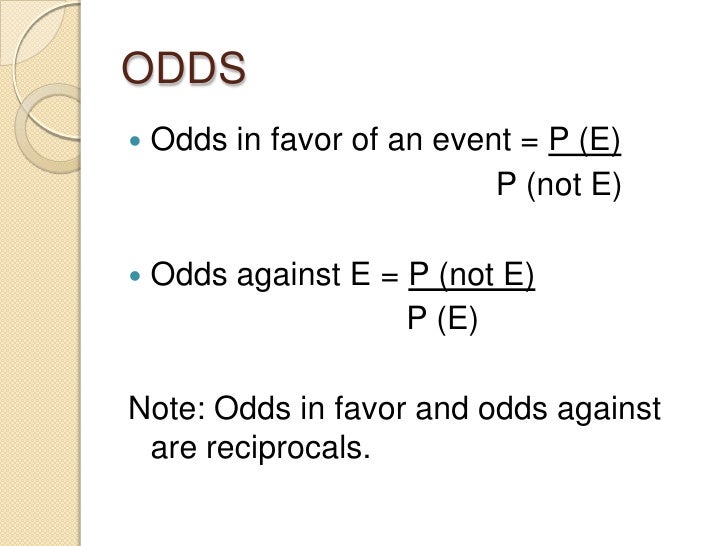



11 6 Probability Involving Or And Not




Probability Vs Odds What S The Difference Learn It And By Z Ai Towards Data Science



1




What Is An Odds Ratio And How Do I Interpret It Critical Appraisal
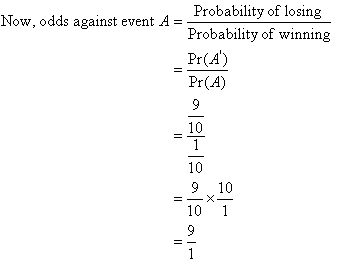



Odds
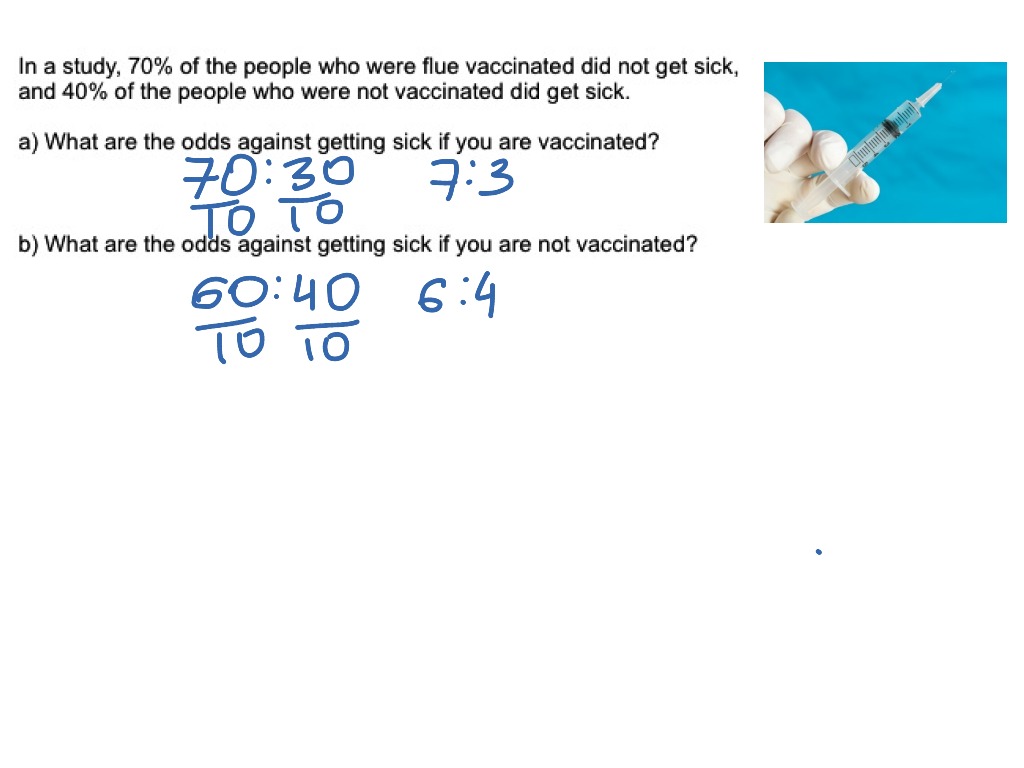



Probability And Odds Math Odds Showme




How To Calculate Odds 11 Steps With Pictures Wikihow




Math 30 2 Probability Odds Acceptable Standards 50 79 The Student Can Express Odds For Or Odds Against As A Probability Determine The Probability Ppt Download
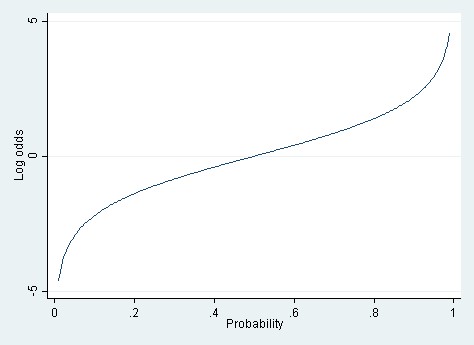



Linear Vs Logistic Probability Models Which Is Better And When Statistical Horizons




Comparing Probability Odds For And Odds Against Youtube




What Are The Odds That You Know About The Odds Analytics Vidhya




An Intro To Odds Notation A Mathematical And Theoretical Look At By Lloyd Danzig Medium
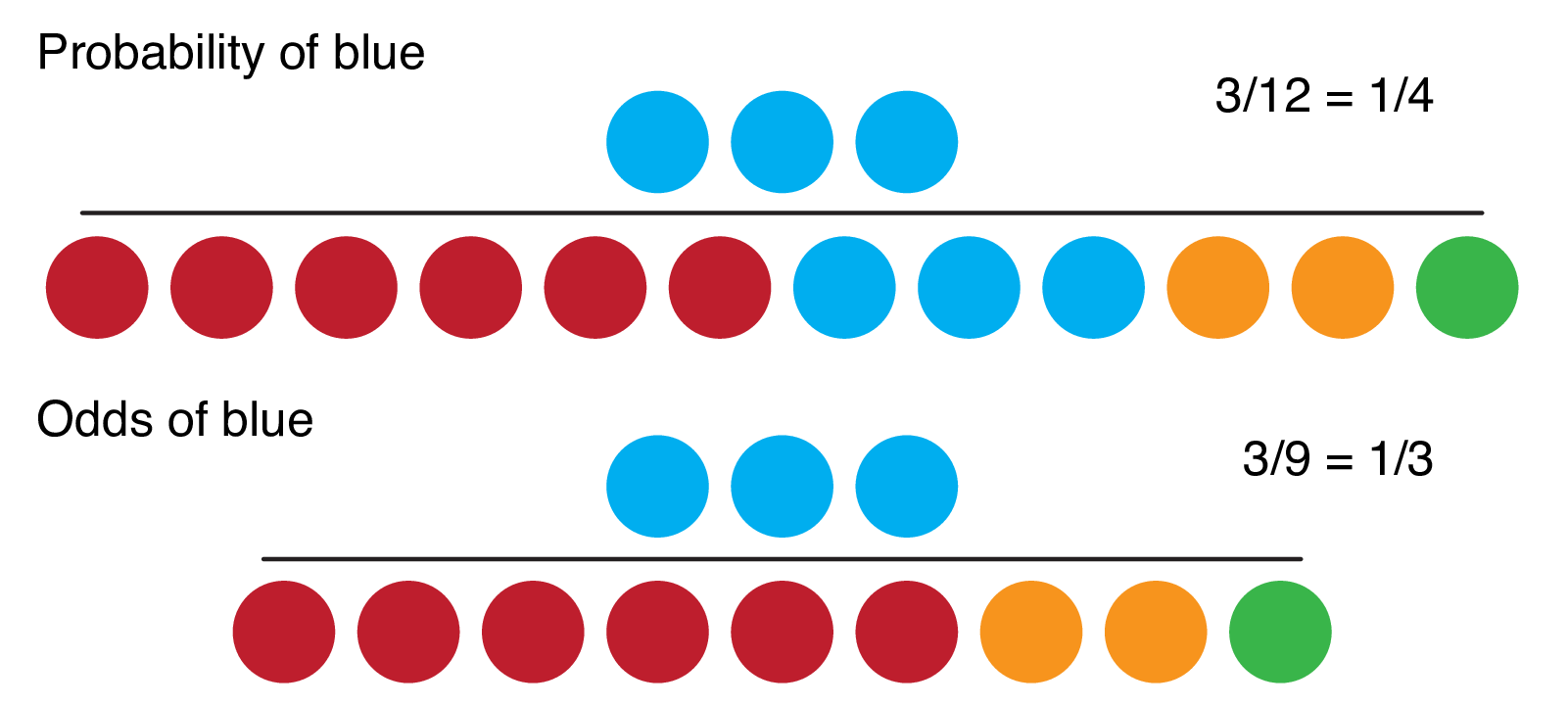



9 2 Binary Logistic Regression R For Health Data Science




Odds Probability And The Lottery Lotterycodex
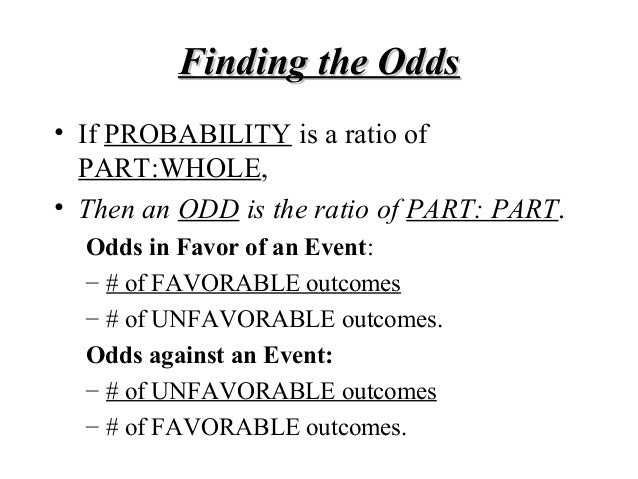



5 6 Probability And Odds Lesson




Calculating The Odds Of An Event Mathematics For The Liberal Arts
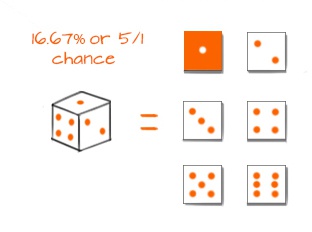



Betting Odds Explained Sport Betting Guide 8sport




Lecture 5 Basic Probability David R Merrell Intermediate Empirical Methods For Public Policy And Management Ppt Download
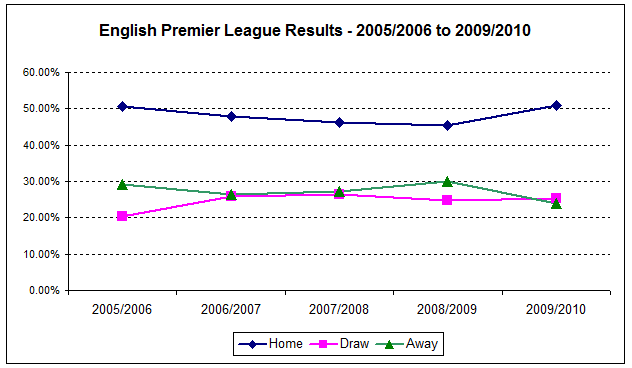



Calculation Of Football Betting Odds Using Probability And Deviation




Simple Probability Definition Probability The Chance Some Event




Binary Logistic Regression With Odds Ratios Calculated For The Download Table
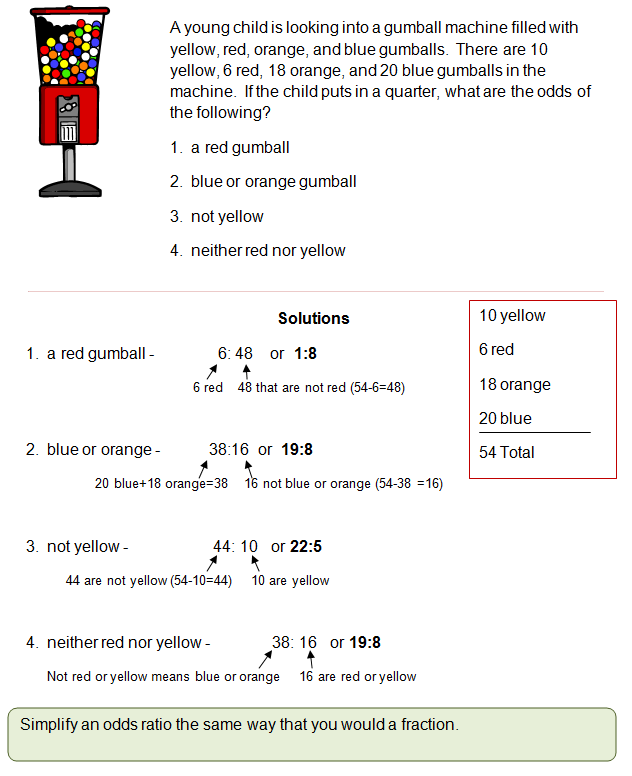



Odds And Probability
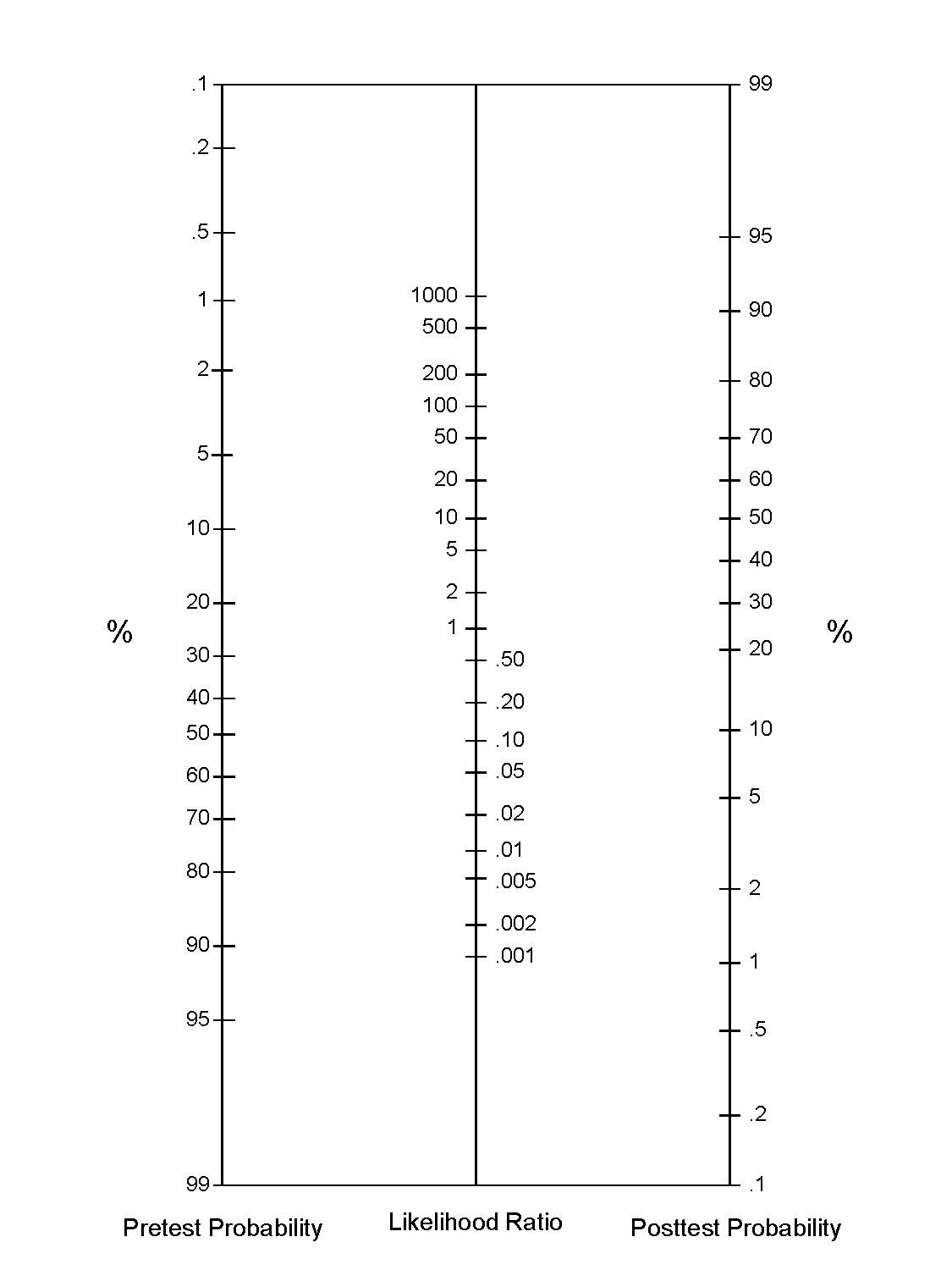



File Probability Nomogram Useful For Combining Probability And New Information That Changes Odds As Used In Evidence Based Medicine And Evidence Based Assessment 01 Pdf Wikimedia Commons



Q Tbn And9gctxz8owky Sul84xtk4ggzacxwhkmhguhlxwyjj9avufagdrhwm Usqp Cau




What And Why Of Log Odds What Are Log Odds And Why Are They By Piyush Agarwal Towards Data Science




Definition And Calculation Of Odds Ratio Relative Risk Stomp On Step1
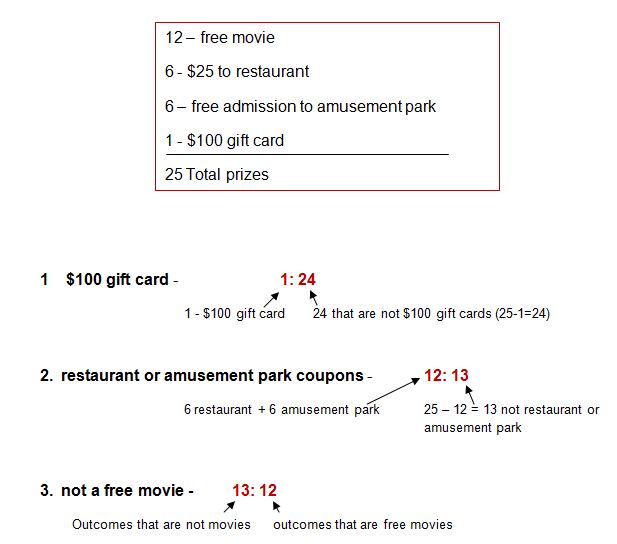



Odds And Probability




Probability Vs Odds What S The Difference Learn It And By Z Ai Towards Data Science




Part 3 Module 3 Probability Suppose We Create




Probability Odds Odds Ratio Youtube




What S The Difference Between Probability And Odds




Estimated Z Score Odds Ratio And The Corresponding Probability For The Download Table



1



Odds Vs Risk Vantage Research




Converting Between Probability And Odds Mathwoes Youtube




Probability And Odds Quiz Topics Spin A Spinner Probability Draw From A Bag Of Balls Odds Co Probability Middle School Math Resources 7th Grade Math




Log Odds Definition And Worked Statistics Problems




Odds Ratios The Odd One Out Stats By Slough
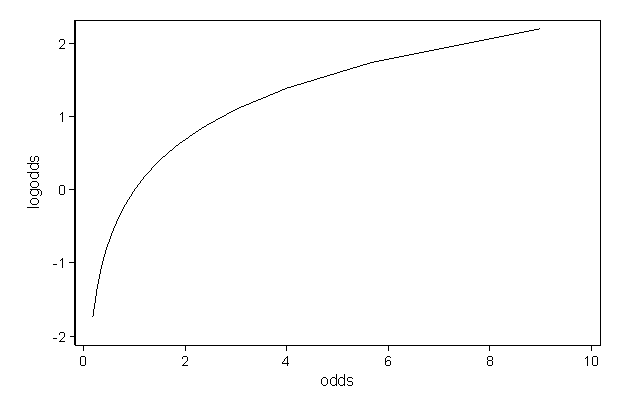



Faq How Do I Interpret Odds Ratios In Logistic Regression
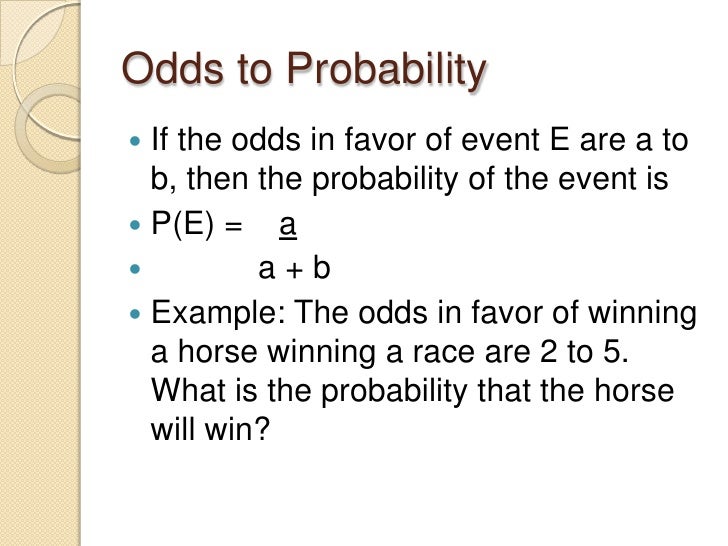



11 6 Probability Involving Or And Not




Betting Fundamentals Understanding Probability Punting Stars




Is There A Difference Between Odds And Probability
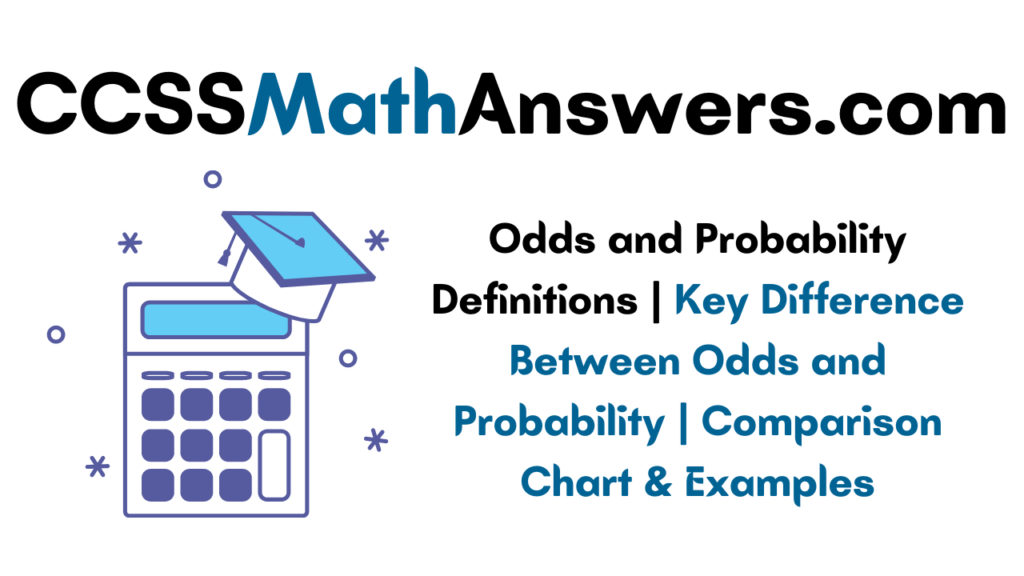



Odds And Probability Definitions Key Difference Between Odds And Probability Comparison Chart Examples Ccss Math Answers
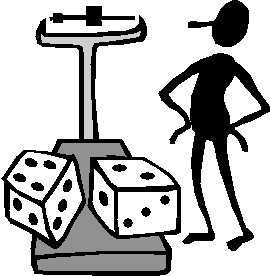



The Difference Between Probability And Odds




Logistic Regression 1 From Odds To Probability Dr Yury Zablotski




Odds Are Not The Same As Probabilities Will Townes




Probability Probability Vs Odds Lesson Math Statistics Showme
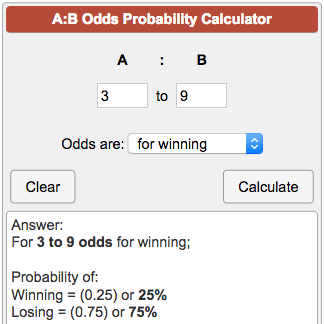



Odds Probability Calculator
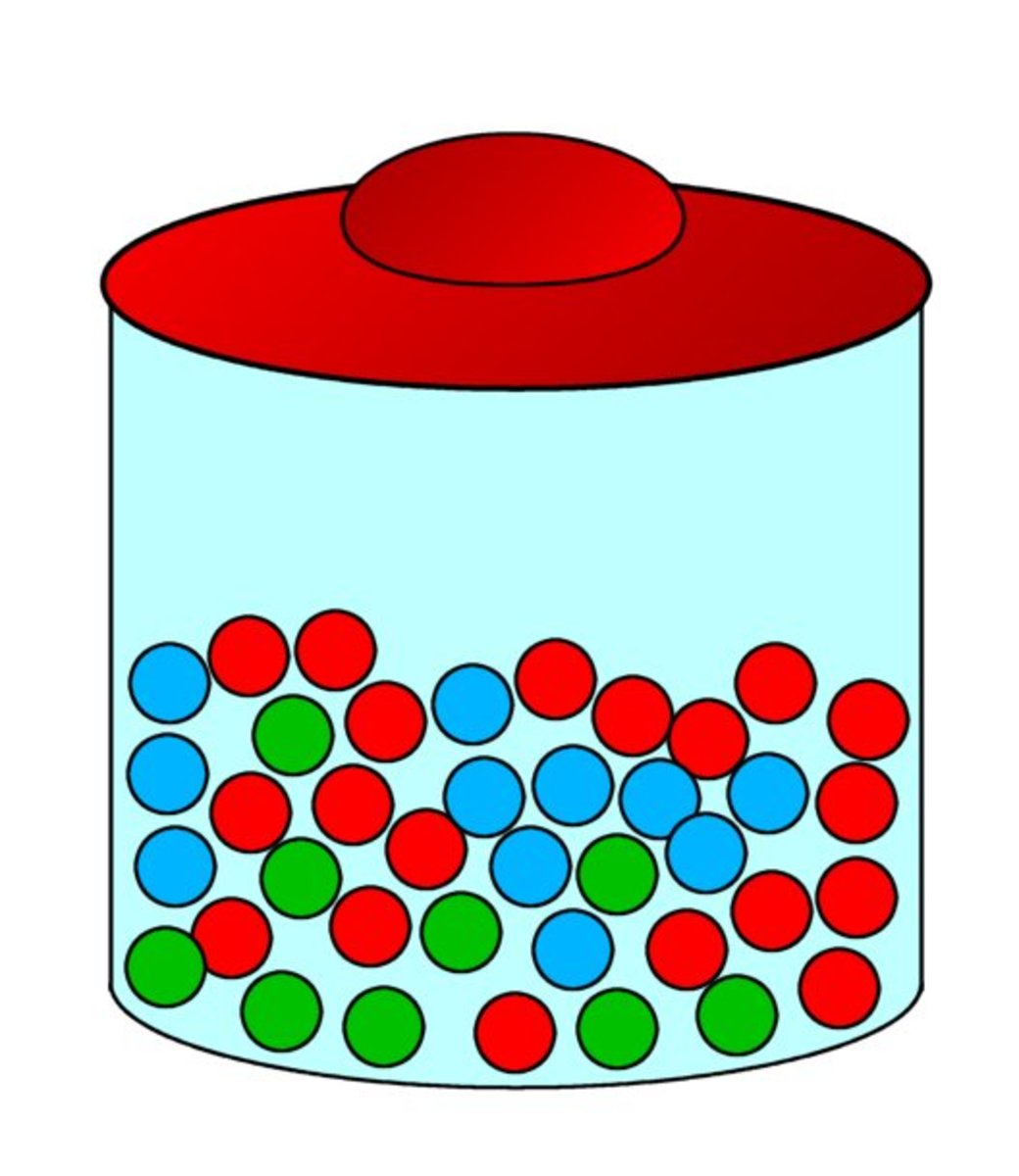



How To Find The Probability Of An Event And Calculate Odds Permutations And Combinations Owlcation




3 Ways To Calculate Lotto Odds Wikihow
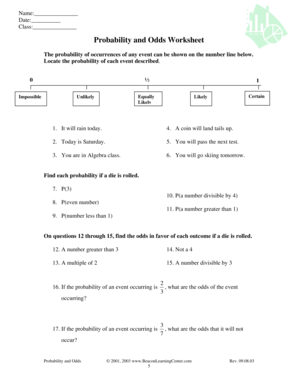



Probability And Odds Worksheet Fill Online Printable Fillable Blank Pdffiller




True Odds Calculator Find Probabilities Fair Odds Margin




Cureus What S The Risk Differentiating Risk Ratios Odds Ratios And Hazard Ratios




Probability And Odds Pptx Powerpoint



0 件のコメント:
コメントを投稿